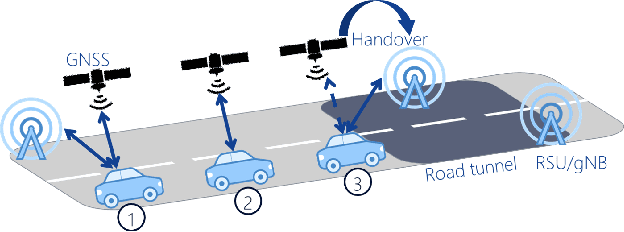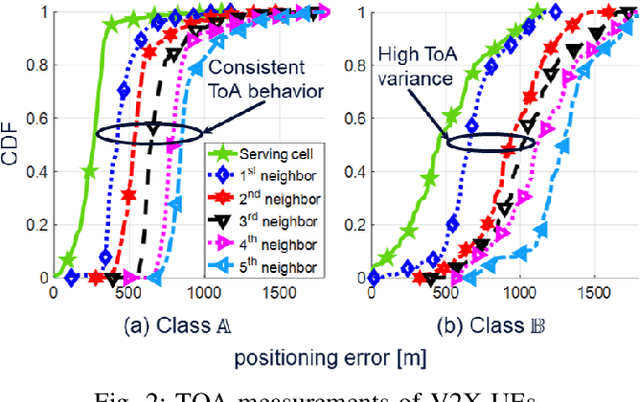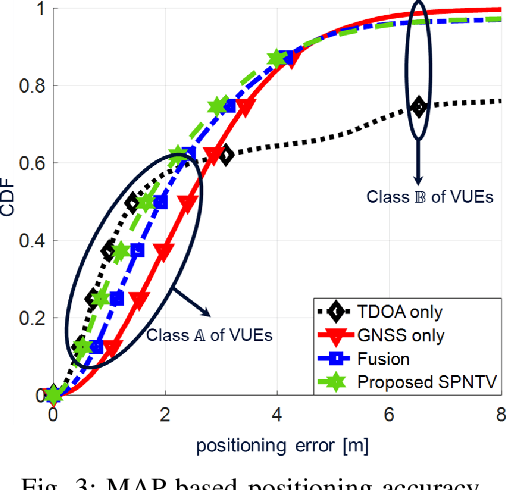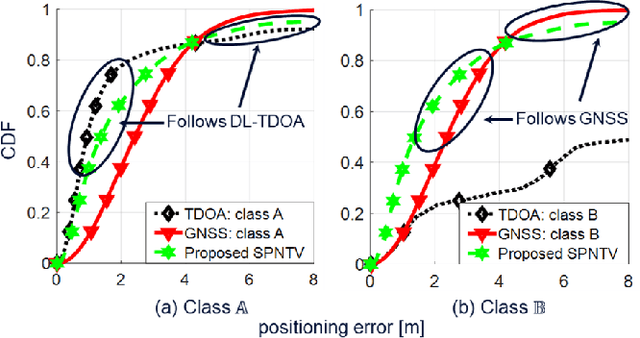Amitava Ghosh
Urban Outdoor Propagation Measurements and Channel Models at 6.75 GHz FR1(C) and 16.95 GHz FR3 Upper Mid-Band Spectrum for 5G and 6G
Oct 24, 2024Abstract:Global allocations in the upper mid-band spectrum (4-24 GHz) necessitate a comprehensive exploration of the propagation behavior to meet the promise of coverage and capacity. This paper presents an extensive Urban Microcell (UMi) outdoor propagation measurement campaign at 6.75 GHz and 16.95 GHz conducted in Downtown Brooklyn, USA, using a 1 GHz bandwidth sliding correlation channel sounder over 40-880 m propagation distance, encompassing 6 Line of Sight (LOS) and 14 Non-Line of Sight (NLOS) locations. Analysis of the path loss (PL) reveals lower directional and omnidirectional PL exponents compared to mmWave and sub-THz frequencies in the UMi environment, using the close-in PL model with a 1 m reference distance. Additionally, a decreasing trend in root mean square (RMS) delay spread (DS) and angular spread (AS) with increasing frequency was observed. The NLOS RMS DS and RMS AS mean values are obtained consistently lower compared to 3GPP model predictions. Point data for all measured statistics at each TX-RX location are provided to supplement the models and results. The spatio-temporal statistics evaluated here offer valuable insights for the design of next-generation wireless systems and networks.
End-to-End Deep Learning for TDD MIMO Systems in the 6G Upper Midbands
Feb 01, 2024Abstract:This paper proposes and analyzes novel deep learning methods for downlink (DL) single-user multiple-input multiple-output (SU-MIMO) and multi-user MIMO (MU-MIMO) systems operating in time division duplex (TDD) mode. A motivating application is the 6G upper midbands (7-24 GHz), where the base station (BS) antenna arrays are large, user equipment (UE) array sizes are moderate, and theoretically optimal approaches are practically infeasible for several reasons. To deal with uplink (UL) pilot overhead and low signal power issues, we introduce the channel-adaptive pilot, as part of an analog channel state information feedback mechanism. Deep neural network (DNN)-generated pilots are used to linearly transform the UL channel matrix into lower-dimensional latent vectors. Meanwhile, the BS employs a second DNN that processes the received UL pilots to directly generate near-optimal DL precoders. The training is end-to-end which exploits synergies between the two DNNs. For MU-MIMO precoding, we propose a DNN structure inspired by theoretically optimum linear precoding. The proposed methods are evaluated against genie-aided upper bounds and conventional approaches, using realistic upper midband datasets. Numerical results demonstrate the potential of our approach to achieve significantly increased sum-rate, particularly at moderate to high signal-to-noise ratio (SNR) and when UL pilot overhead is constrained.
Dynamic Selective Positioning for High-Precision Accuracy in 5G NR V2X Networks
Feb 20, 2021



Abstract:The capability to achieve high-precision positioning accuracy has been considered as one of the most critical requirements for vehicle-to-everything (V2X) services in the fifth-generation (5G) cellular networks. The non-line-of-sight (NLOS) connectivity, coverage, reliability requirements, the minimum number of available anchors, and bandwidth limitations are among the main challenges to achieve high accuracy in V2X services. This work provides an overview of the potential solutions to provide the new radio (NR) V2X users (UEs) with high positioning accuracy in the future 3GPP releases. In particular, we propose a novel selective positioning solution to dynamically switch between different positioning technologies to improve the overall positioning accuracy in NR V2X services, taking into account the locations of V2X UEs and the accuracy of the collected measurements. Furthermore, we use high-fidelity system-level simulations to evaluate the performance gains of fusing the positioning measurements from different technologies in NR V2X services. Our numerical results show that the proposed hybridized schemes achieve a positioning error $\boldsymbol{\leq}$ 3 m with $\boldsymbol{\approx}$ 76\% availability compared to $\boldsymbol{\approx}$ 55\% availability when traditional positioning methods are used. The numerical results also reveal a potential gain of $\boldsymbol{\approx}$ 56\% after leveraging the road-side units (RSUs) to improve the tail of the UE's positioning error distribution, i.e., worst-case scenarios, in NR V2X services.
 Add to Chrome
Add to Chrome Add to Firefox
Add to Firefox Add to Edge
Add to Edge